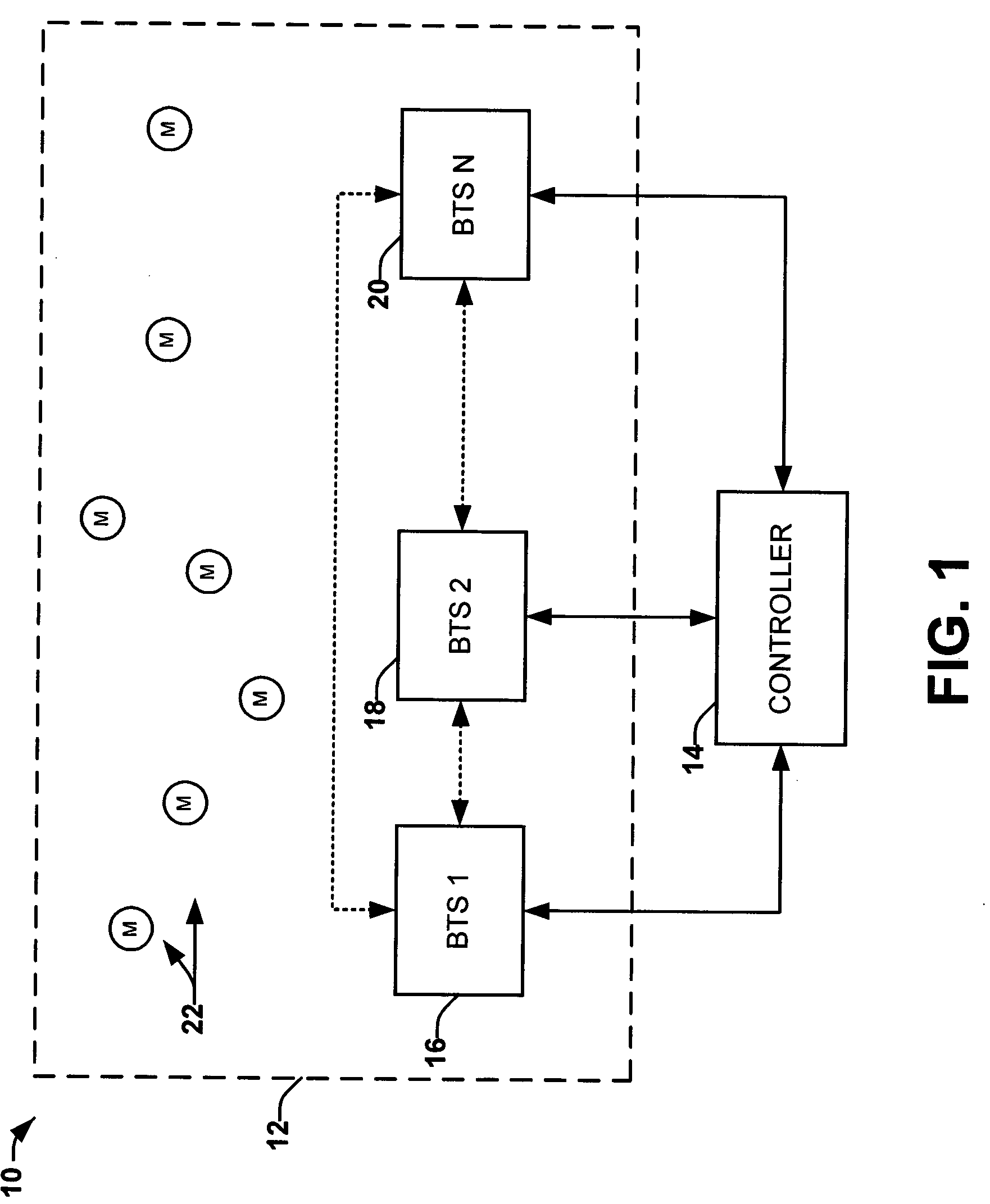Method and system for soft handover
a soft handover and method technology, applied in the field of wireless communication, can solve the problems of low soft handover, dropped calls, and good chance of connection dropping, and achieve the effect of minimization communication quality and optimizing loading
- Summary
- Abstract
- Description
- Claims
- Application Information
AI Technical Summary
Benefits of technology
Problems solved by technology
Method used
Image
Examples
Embodiment Construction
[0032] The present invention relates generally to a methods and systems for facilitating soft handover of a mobile unit on a wireless network. The present invention can employ multi-channel receivers to receive signals from any mobile units within range, including mobile units assigned to neighboring base stations. The received signals, or at least information associated with the signals, can be relayed to a central location. The information can be utilized to assess whether a mobile should be handed over to another base station.
[0033] The present invention provides a solution for handoff between base stations in Global System for Mobile (GSM), Time Domain Multiple Access (TDMA), Frequency Domain Multiple Access (FDMA), and other wireless standards. Because the mobile unit may already be communicating with the BTS that the mobile unit is being handed off to prior to such handover, latency can be reduced. Although the present invention is described throughout this specification in t...
PUM
 Login to View More
Login to View More Abstract
Description
Claims
Application Information
 Login to View More
Login to View More - R&D
- Intellectual Property
- Life Sciences
- Materials
- Tech Scout
- Unparalleled Data Quality
- Higher Quality Content
- 60% Fewer Hallucinations
Browse by: Latest US Patents, China's latest patents, Technical Efficacy Thesaurus, Application Domain, Technology Topic, Popular Technical Reports.
© 2025 PatSnap. All rights reserved.Legal|Privacy policy|Modern Slavery Act Transparency Statement|Sitemap|About US| Contact US: help@patsnap.com



